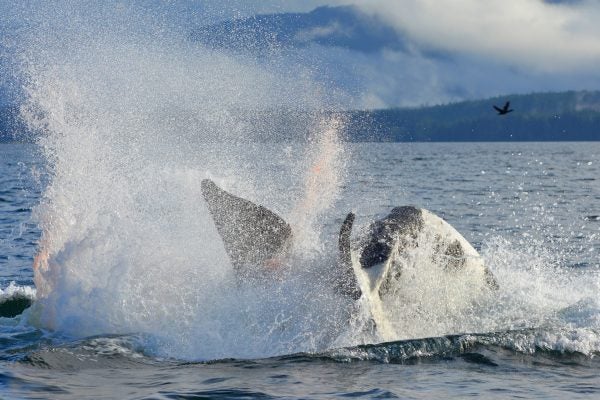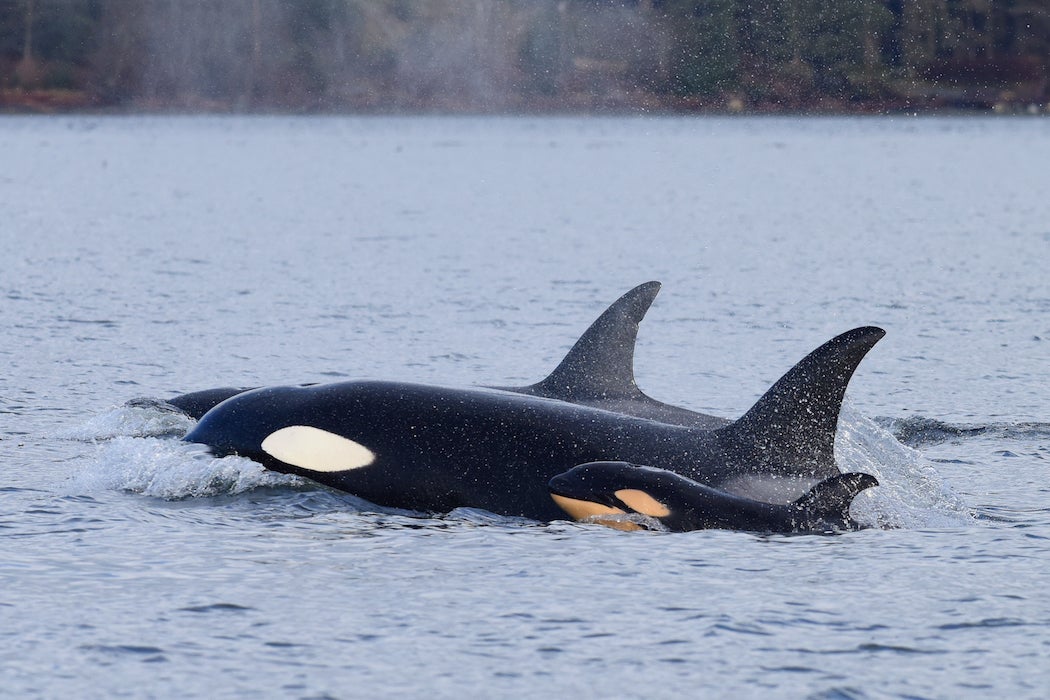On December 2, 2016 marine biologists studying killer whales off the coast of Vancouver Island in Canada, witnessed a ghastly murder scene. First, they picked up strange sounds with their hydrophones—mikes that detect sounds underwater. Then they watched an entire killer whale drama unfold before their eyes, in which the whales actually killed one of their own: a newborn calf.
The scientists saw a small group of orcas that included a mother and a young calf, fleeing from a male orca and his mother. The calf was barely a few days old, researchers estimated. Eventually, the pursuing mother-and-son pair caught up with the fugitives—and an attack ensued. The scientists saw “erratic movements and splashing suggestive of a predation event.” Moments later, they realized that the infant was no longer next to his mother, but when the male swam past the research boat, “the fluke of the neonate could be seen in his mouth with the body intact trailing underneath his lower jaw.”
The young mother hopelessly tried to save her offspring. She struck and bit the male, “sending blood and water in the air,” but to no avail. Moreover, the male’s mother interfered, blocking the attack. The male then kept the baby underwater until it drowned. Whales and dolphins must come up to the surface to breathe so the murderous duo’s actions seemed deliberate.
But why were they so determined to kill the baby? And is it a normal behavior for the marine mammal species?

Cetacean infanticide is very rare. In fact, the scientists have never witnessed orcas killing their young before. “This is the first account of infanticide reported in killer whales and the only case committed jointly by an adult male and his mother outside of humans,” they wrote. But evidence of other infanticide cases among marine mammals have been reported before.
In the 1990s, not one but nine dead dolphin calves washed up on the Virginia coast with multiple broken bones, ripped tissue, and bruised organs on the inside—the types of injuries that adult dolphins are known to cause with their beaks. “It looked like someone had taken a baseball bat and just literally beaten these animals to death,” said Dale G. Dunn of the Armed Forces Institute of Pathology in Washington, D.C, who examined the dead dolphin calves. On one occurrence, scientists observed an adult dolphin “gripping the calf in its jaws, pushing it around underwater,” drowning it as the male orca had done to the baby whale. Moreover, in 1997 recorded dolphin infanticides hit a strange and unexplainable peak. Scientists found more than four times as many dead young dolphins as they did in 1994. They never found an explanation for this strange infanticide boom, but one strong hypothesis was “evolutionary pressures.”
Weekly Newsletter
Some scientists hypothesize that marine mammals might be doing what mature lions do when they kill the young cubs so they can mate with their mothers. Once young mothers lose their babies, they stop lactating and become fertile fairy quickly. Plus, “infanticide not only creates a mating opportunity but can also remove the progeny of a competing male from the gene pool,” researchers say.
But how do you explain the male orca’s mother helping with the infanticide? Unlike many other mammals, orcas typically live in large family groups known as pods, which are run by older females. In this case, an older female may have also had some stakes in her pod’s reproduction—high enough to help her adult son to kill an unwanted newborn.







